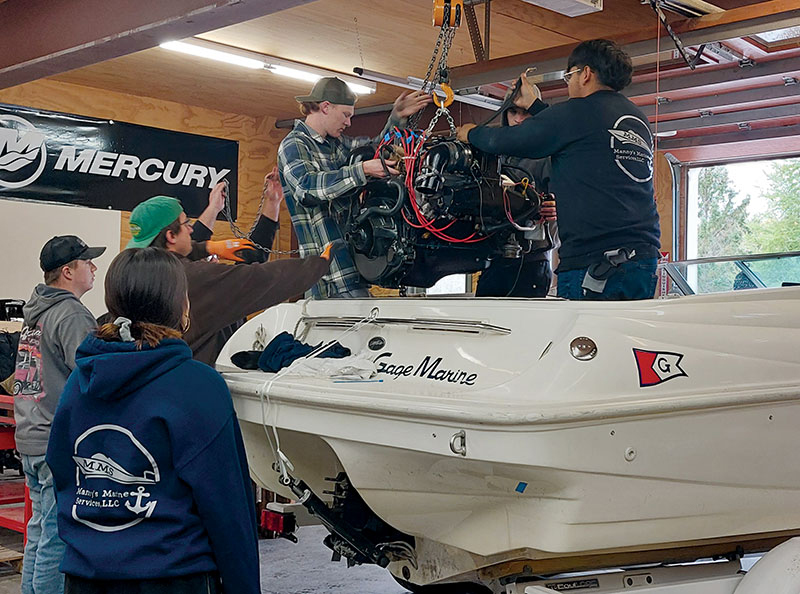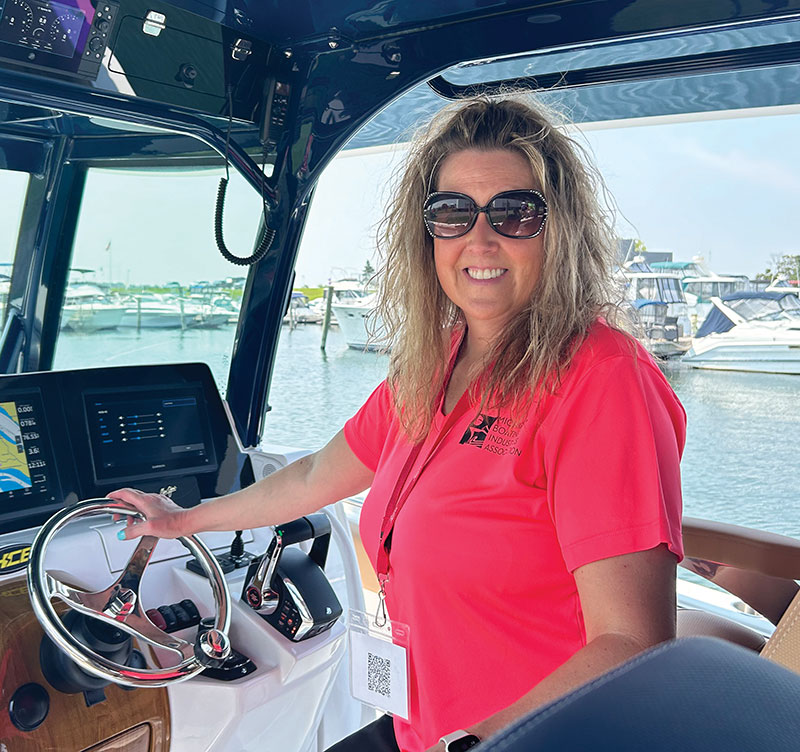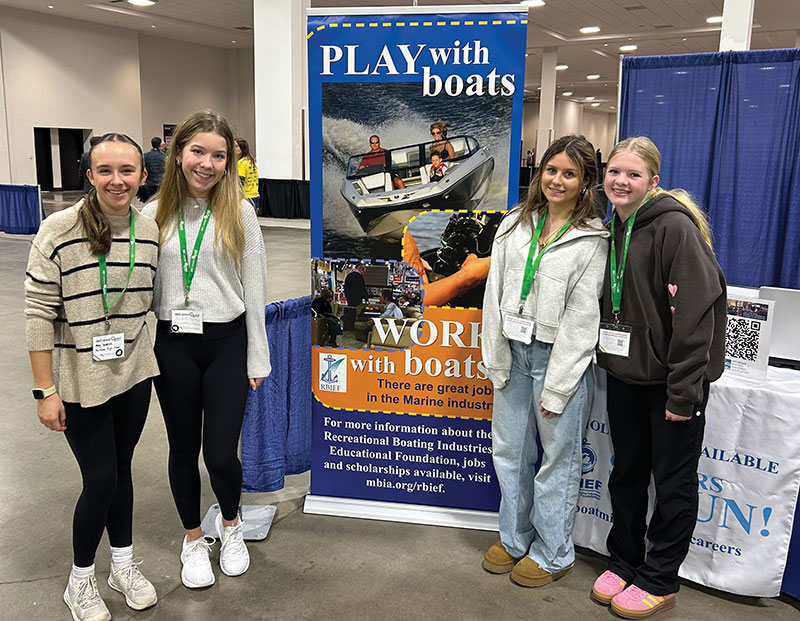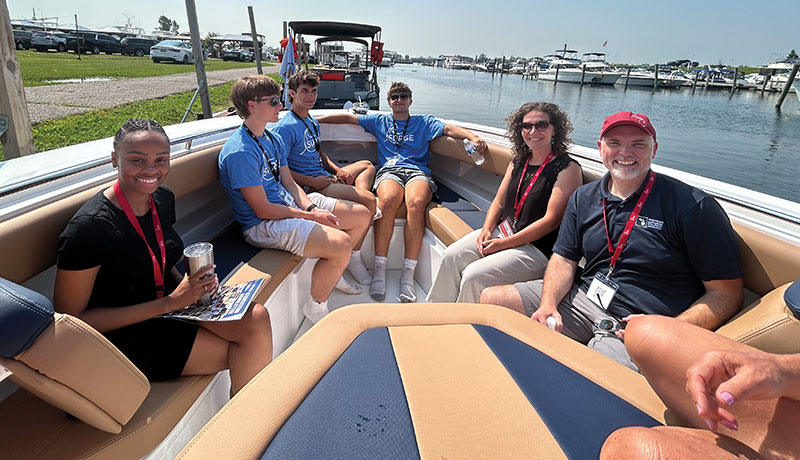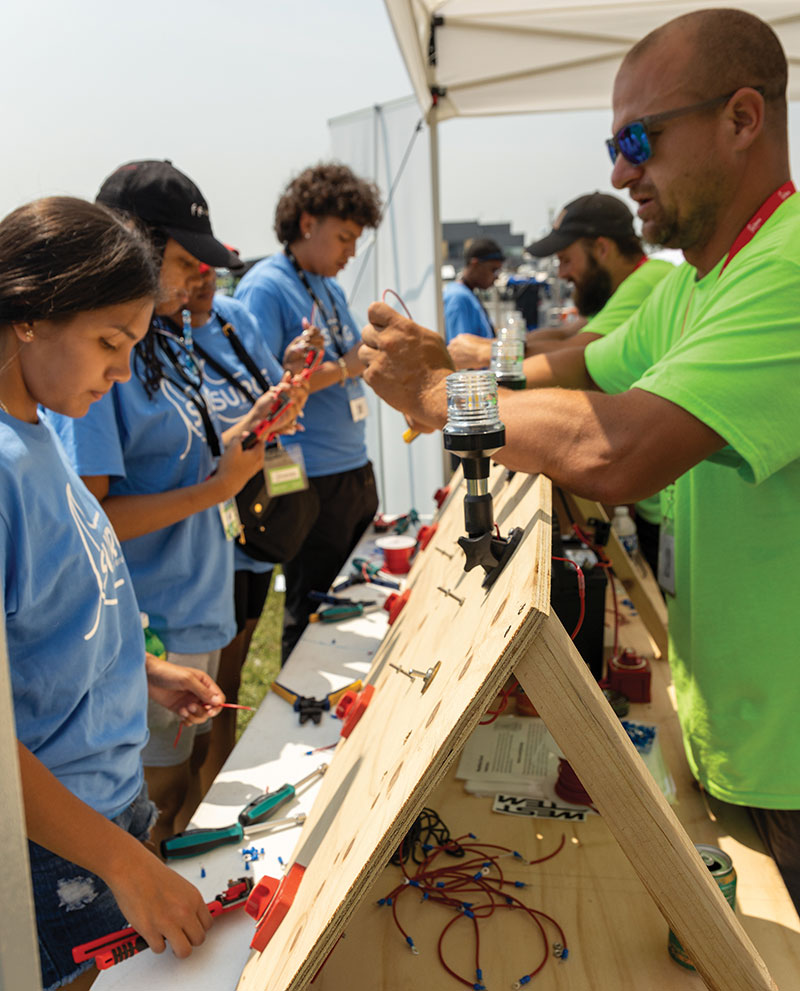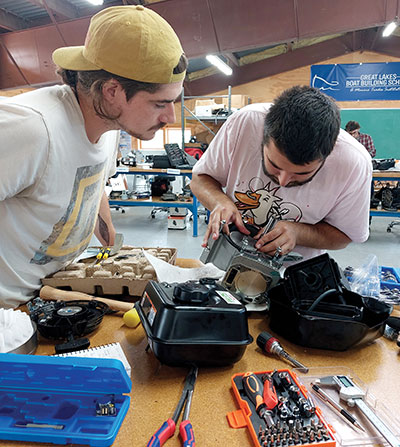
Workforce development, part III: Building for the next generation
Over the last 12 months, Lakeland Boating has joined with expert insiders to take a deep dive into a pervasive challenge facing the marine industry: The shortage of service technicians. In the February 2024 issue, we discussed why this is a steep hill to climb, and in September 2024, we shared the perspectives of two young people who chose this career path.
Now, as a new year begins, we are exploring how the marine industry is working together to attract young people, build career pipelines and retain employees. We quickly learned that not only are we entering a time of optimism and opportunity, but there seems to be a larger awakening taking place.
Start with youth
The American writer William Faulkner once noted that “the youth are the hope of the future.” The Michigan Boating Industries Association (MBIA) agrees; not only did the nonprofit organization hire a workforce development director roughly a year ago, it chose someone with a strong background in education.
A lifelong boater who grew up in Michigan, Kelly Kerchoff worked in education for 15 years. She says she was ready for something new when she saw the opening with MBIA.
“I like networking and building partnerships, and I would still be able to work with students and educators,” she explains.
For Kerchoff, job No. 1 is to raise awareness among high school students.
In November, MBIA attended MiCareerQuest, a career exploration event for approximately 8,000 young people, and it will host a career day at the Detroit Boat Show in February.
“Kids tell me, ‘I have a boat, but I didn’t know it could be a career,’” Kerchoff says. “It’s so much fun to see the lightbulb come on.”
Job No. 2 is to build relationships with counselors, educators and administrators so the students will have the support they need to pursue their careers. Kerchoff says she had an opportunity to present information about marine tech careers to 600 counselors at a single October event.
“Now they’re excited to bring kids to the boat show in Detroit this winter,” she reports.
In addition, she is working with the Michigan Department of Education’s Office of Career and Technical Education (CTE) to bring a dedicated Classification of Instructional Programs (CIP) code back to high school trade programs. This would allow educators to teach marine systems and technology in high school CTE programs.
“I presented to the Career Education Planning District Council in April,” Kerchoff says. “We are not getting the CIP code back yet, but they are working on the curriculum and competencies for marine in CTE programs that choose to teach it — for example, small-engine programs, which have their own CIP code.
“All the details are still being worked out, but we are making waves,” she continues. “This is a deep need, so we will keep pushing forward.”
Of course, once high school students are engaged in this work, they need a pipeline — a way to transition to a post-secondary program after graduation that provides high-quality, hands-on training. One shining star is the private, nonprofit Great Lakes Boat Building School (GLBBS) in the rural community of Cedarville, Michigan, in the Upper Peninsula’s Les Cheneaux Islands.
MBIA
Great Lakes Boat Building School
Great Lakes Boat Building School
Build a pipeline for all
The only fully accredited marine industry school in the Great Lakes, GLBBS offers a 12-month Marine Service Technology Program that prepares students to become well-rounded, entry-level technicians. In just four short years, the program has become a resounding success.
“We’re unique because we offer more than classroom instruction,” says Nikki Storey, GLBBS president. “We get our students out on the water, and they are learning hands-on skills. It’s all about the students for me. I want to make sure we are doing everything we can to get them placed in jobs — and careers.”
Storey says much more needs to be done, however. The school’s vision includes additional programming in marine electronics, which no other school in the country is doing right now; more opportunities for “micro-credentialing” through short courses; and working with employers to set realistic expectations.
“We have high standards and give our students a strong foundation, but this is still a one-year program,” she explains. “You need to work with them and help them grow in their positions.”
Storey has another long-term goal for the school: Improved demographic outreach. Last summer, GLBBS invited the Detroit-based Green Door Initiative to Cedarville to raise awareness about marine industry careers. Not long afterward, it partnered with Green Door Initiative, MBIA and Jason McGuire, owner of Riverside Marina in Detroit, to host a special Detroit River event called Surge.
“We got inner-city youth out on the water and engaged them with hands-on trades activities,” Storey says. “The adults were learning too. It was a really exciting event to organize.
“It might seem odd for a boat building school to take on this role, but we thought, why not?” she added. “We need to broaden our pool of applicants.”
As this issue was going to press, GLBBS hosted two tours of inner-city youth who traveled from Detroit to the Upper Peninsula to learn about the work and the lifestyle if they chose this career path. It was the first time they had ever crossed the Mackinac Bridge.
Grow together
Individual employers have an important role to play in this industry-wide effort as well. Not only do they need to attract good employees, they must find ways to retain them.
Cort Corino has experience with this. Not only was he responsible for building a new service department from the ground up at Jefferson Beach Yacht Sales’ (JBYS) Chicago location, he also oversees new technician training and customer service experience as director of corporate service training & development — a new position that’s focused on continuous education for technicians, service personnel succession planning and strategic service initiatives for the company.
“It is so rewarding and fun,” he says.
A former U.S. Coast Guard machinery technician, Corino has worked in the recreational and commercial marine industries as a lead mechanic, project manager, service writer and commercial projects manager. He became an American Boat & Yacht Council (ABYC) master technician in 2015, taught on an adjunct basis for ABYC and assisted with curriculum development for the Northwest School of Wooden Boatbuilding’s marine systems program.
For Corino, the most important step an employer can take is to support its technicians. This might seem obvious, but he points out there are layers to consider.
“First, make sure you have a quality onboarding process,” he says. “Your techs need time, experience and training with a focus on quality and safety, not just checking boxes. Don’t skip steps just because there is so much demand.”
Next, pay attention to employee needs, and be open to making adjustments. This might mean offering three-day weekends during the offseason or being flexible with clock-out times. As long as the work is accomplished and done well, all options should be on the table.
“Our industry has a small-town feel, and we should be able to build a culture that involves more flexibility, more fun and more opportunities to grow in your position once you’re past the basics,” Corino says. “We can go above and beyond to show we care, and we can grow together.”
The secret sauce, he says, is developing technicians with excellent skills who love what they do. Customers will be happier, and the word will spread.
“Businesses say their customers are No. 1, but I say technicians are No. 1,” he reflects. “You need them to retain your customers, so be there for them.”
“We need to show them we believe in them and their growth,” agrees Amy Crouchman, Walstrom Marine’s chief integration officer and MBIA’s vice chair. She says she has championed workforce development initiatives for 15 years, and a generational shift is now taking place.
“I’ve been watching the older technicians and service managers, the guys who know the work and feel it in their bones,” she notes. “They’re getting older. We need the new generation to understand this is a year-round job, a career that pays well, and we need schools to provide more hands-on education versus classroom education.”
Crouchman has been part of the marine industry since she was 18 years old when she took a position on a charter dinner cruise boat. In the years to follow, she traveled to Italy to help build a private yacht for a customer, worked at a shipyard in Seattle and a yacht club in Florida, and cruised the Mediterranean, Atlantic and Great Lakes.
She joined the Walstrom Marine team when she finally came home to southeast Michigan, helping the company build a service department at its Algonac location. She recalls that everyone from plumbers to roofers threw their hats in the ring.
“If you’re the right person, we will train you and find a spot for you,” she says, “but you need to have a foundation and transferrable skills. Like an auto mechanic, for example.”
“If you have worked on cars or four-wheelers, you can do this,” Kerchoff agrees.
Join the movement
Kerchoff, Storey, Corino and Crouchman are all part of what has become a movement to build a capable, well-trained workforce of marine service technicians for the industry. In Michigan, that movement has progressed from discussion to action.
“ABYC is willing to share its curriculum and work with us,” Crouchman says. “Businesses are willing to spend money to train their people and support their education, which makes them feel appreciated. I’ve talked with Nikki at GLBBS over the years about the importance of housing as well, due to the cost of relocation and the cost of living in general.
“And, Kelly is meeting with CTEs and high school counselors and getting amazing feedback,” she continues. “She is so full of hope and energy — that gets us all excited!”
What’s more, technicians who are approaching retirement have indicated they might be willing to stay involved through teaching on a part-time basis.
“They can make such a difference in our industry,” Kerchoff says. “They have a lot of knowledge to offer to our next generation of technicians.”
Momentum is building. Students are learning about marine industry careers, which offer jobs with attractive professional development opportunities and an unbeatable lifestyle.
“Who wouldn’t want to work on a boat and be on the water?” Kelly muses. “It’s not a typical 9-to-5. You get to be outdoors, and you’re making a difference. You’re getting people back out there.”
“It’s such a rewarding career because you’re helping people go out and make memories they’ll carry their whole lives,” Crouchman agrees.
Corino adds, “Every day is different and exciting.”
“It’s a different kind of industry,” Storey concludes. “We have something good to sell. Now, we have to tell that story.”
This is the third and final installment in a three-part series exploring workforce development issues in the boating industry.


